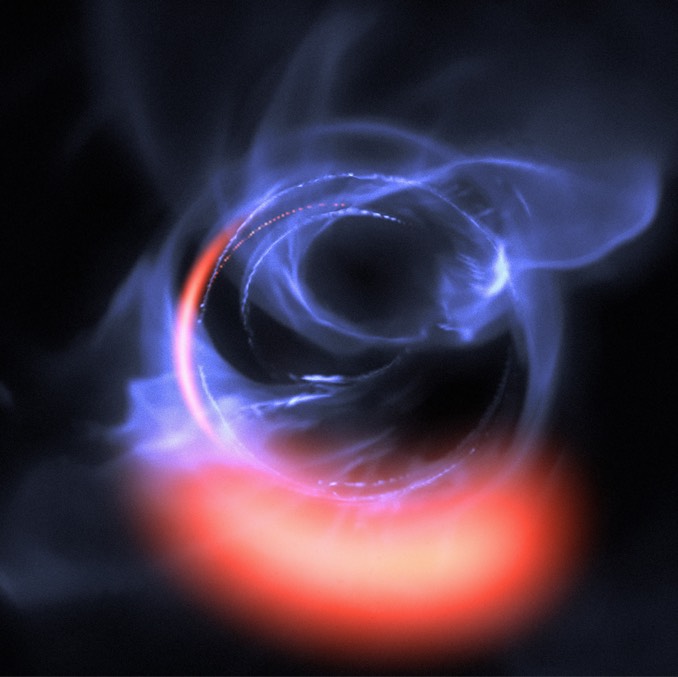
The European Southern Observatory’s sensitive GRAVITY instrument, combining light from the four units making up ESO’s Very Large Telescope, has measured bursts of infrared radiation from the heart of the Milky Way that researchers say confirm the long-held belief that a 4-million-solar-mass black hole lurks at the center of Earth’s galaxy.
The infrared flares, emitted from super-heated material moving at 30 percent the speed of light in a circular orbit just outside the black hole “provide long-awaited confirmation that the object in the centre of our galaxy is, as has long been assumed, a supermassive black hole,” ESO said in a statement describing the observations.
The flares are thought to originate when gas just outside the black hole’s event horizon – the gravitational point of no return – is heated to extreme temperatures in what is known as the innermost stable orbit, the closest point to a black hole where objects can remain in orbit without falling in and vanishing from the known universe. The ESO observations represent the most detailed look yet at material orbiting so close to a black hole.
“It’s mind-boggling to actually witness material orbiting a massive black hole at 30 percent of the speed of light,” said Oliver Pfuhl, a scientist at the Max Planck Institute for Extraterrestrial Physics, or MPE. “GRAVITY’s tremendous sensitivity has allowed us to observe the accretion processes in real time in unprecedented detail.”
The black hole is known as Sagittarius A* and the accretion disk, where material is trapped in orbit around the hole, is about 10 light minutes – 180 million kilometres (111 million miles) – in diameter. Earlier this year, GRAVITY and the SINFONI instrument on the Very Large Telescope allowed the researchers to observe a close flyby of a star known as S2 as it whipped around Sagittarius A*. Analysis of its orbital motion showed deviations predicted by General Relativity theory.
During those same observations, the researchers saw evidence of three bright flares very close to the presumed black hole. The emissions are thought to originate in compact “magnetic thunderstorms” in the hot gas racing around Sagittarius A*. The observations exactly match theoretical predictions describing the motions of material at the innermost edge of stable orbits around a black hole.
“Taken together, our observations strongly support the presence of orbiting material very close to the event horizon of a four-million-solar-mass black hole,” said MPE researcher Jason Dexter.
Reinhard Genzel, of the Max Planck Institute for Extraterrestrial Physics, led the study.
“This always was one of our dream projects but we did not dare to hope that it would become possible, so soon and so clear.” he said. “The result is a resounding confirmation of the massive black hole paradigm.”



